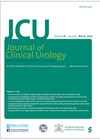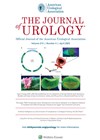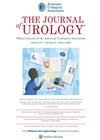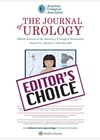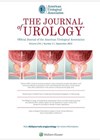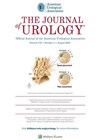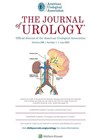
Journal Reviews
Is antibiotic prophylaxis warranted in hypospadias repairs?
Hypospadias repair is a common paediatric urological procedure. Complication rates following hypospadias repair are variable (ranging from 5–10% for distal hypospadias repairs and as high as 32–70% for proximal repairs). Limiting surgical site infections by minimising infection through antibiotic prophylaxis...
Association of prostate size with capsule thickness and glandular epithelial cell density
Benign prostatic hyperplasia (BPH) and prostate cancer (PCa) are two significant urologic diseases affecting ageing men. BPH is histologically evident in over half of men above 50, while PCa is a highly lethal cancer prevalent in men in the United...
Predicting resolution of the primary obstructed megaureter
Primary obstructive mega ureter (POM) is the congenital dilatation of the ureter in the absence of other structural urinary tract anomalies and comprises 10–20% of prenatal hydronephrosis cases. It is often detected during workup for prenatal hydronephrosis and confirmed using...
Using bladder diary data to tailor treatments for night wetting
Primary nocturnal enuresis affects 10–16% of seven-year-old children and has a social, emotional and psychological impact on the affected child. Pathogenesis involves abnormal bladder reservoir function, nocturnal polyuria and an inability to wake up before emptying of the bladder. Desmopressin...
Evaluation of a web-based eHealth programme for children with urinary incontinence: eADVICE Trial
Long waiting times for specialist urology outpatient clinics for children are frustrating for both parents and health practitioners. Delays may result in a deterioration in health and quality of life. Electronic Advice and Diagnosis Via the Internet following Computerized Evaluation...
Long term outcomes of primary ureterovesicostomy for the primary obstructive megaureter
Primary obstructive megaureter is dilatation of the ureter secondary to narrowing at the vesicoureteric junction (VUJ). Many (80%) require no intervention, however, a select number do for worsening hydroureteronephrosis, decreasing renal function, prolonged drainage time, recurrent urinary tract infections or...
Can you boost your bladder with vitamin D?
Bladder overactivity is a common problem affecting the social functioning of children. Overactive bladder dry (OAB-dry) is a term (one not utilised by the International Children’s Continence Society) and refers to patients who are experiencing frequency, urgency and nocturia symptoms...
Children with neuropsychiatric developmental disorders respond less well when treated for bladder bowel dysfunction
Bladder and bowel dysfunction (BBD) is a spectrum of lower urinary tract symptoms and voiding dysfunction accompanied by functional constipation and / or encopresis and may represent up to 47% of paediatric urology consultations. The BBD cycle pattern begins when...
Sexuality and erectile function in young men with spina bifida
As our patients with spina bifida (SB) continue to live longer into adulthood we recognise that many of these men experience challenges with sexual health, related to their underlying neurological function. Few studies on male sexual health in this population...
Preoperative use of testosterone prior to distal hypospadias repair
Preoperative hormonal stimulation has been utilised for >50 years in hypospadias surgery. Surgeons utilise testosterone (T) to increase penile size and glans width to try and improve clinical outcomes. However, a paucity of reliable data supporting its use has limited...
Fluoxetine for refractory night wetting in children – is it safe and effective?
Around 1-2% of teenagers above the age of 15 years and 2-6% of adults continue to wet the bed. Standard treatment often includes bladder advice, alarm therapy, desmopressin and anticholinergics. Tricyclic antidepressants (imipramine) can also be utilised. Unfortunately, most have...
Robot-assisted ureterocalicostomy
Ureterocalicostomy was first introduced by Neuwirt (1947) and further described by Jameson et al. (1957) as an alternative procedure for repair of pelviureteric junction (PUJ) obstruction associated with an intrarenal pelvis. Performing ureterocalicostomy for PUJ repair has been suggested in...


